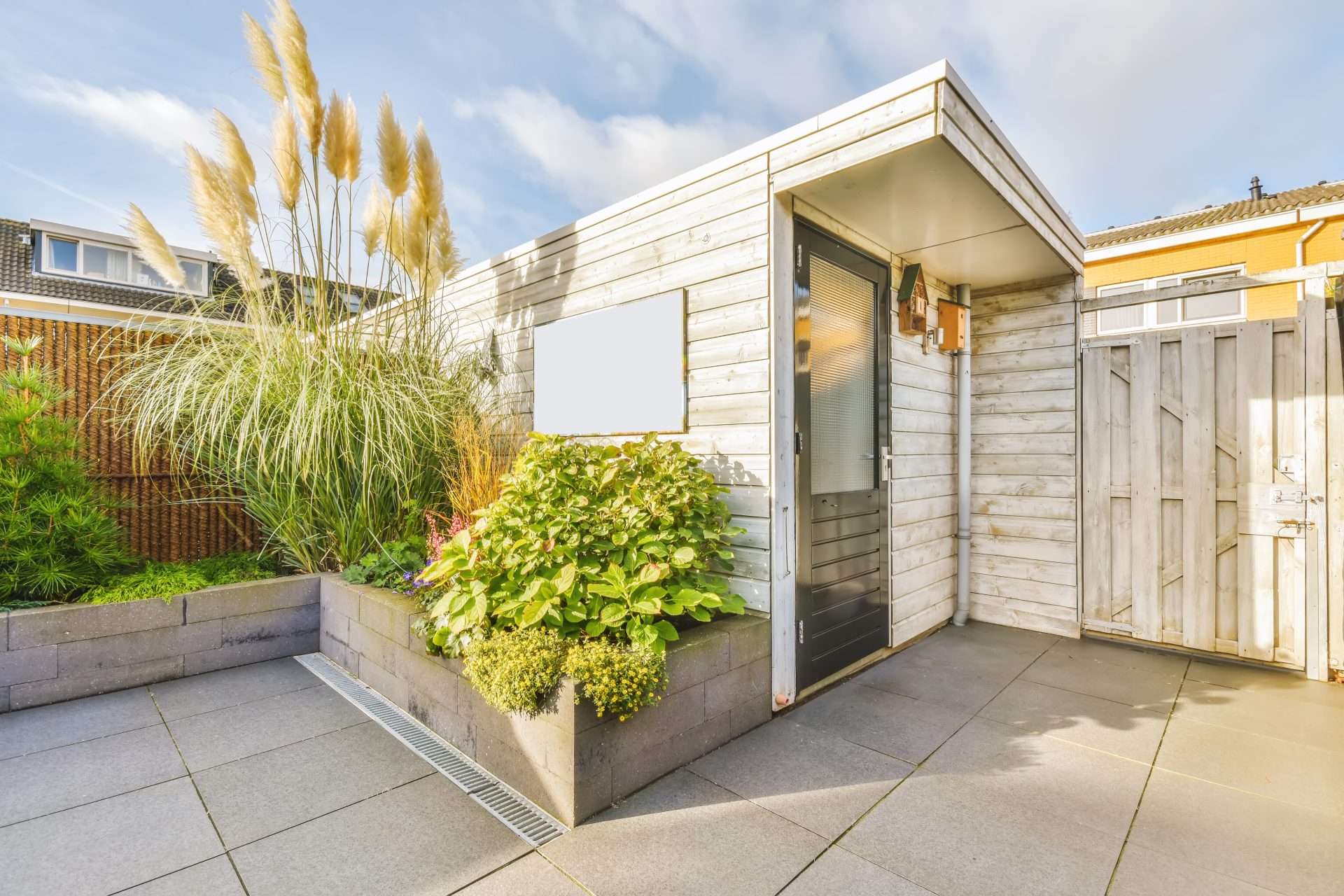Have you ever wondered what an accessory dwelling unit is and how it could transform your property? Accessory dwelling units, or ADUs, are secondary living spaces that share a lot with a single-family home. These versatile structures are gaining popularity across the United States, especially in California, as homeowners seek innovative ways to maximize their property’s potential and generate rental income.
In this comprehensive guide, we’ll explore the meaning of ADUs and their various types, including Junior ADUs (JADUs). You’ll discover the numerous benefits of adding an accessory dwelling unit to your property, from increasing your home’s value to providing flexible living options for family members. We’ll also delve into the legal and zoning considerations you need to keep in mind when planning an ADU, as local ordinances can have a big impact on your project. By the end of this article, you’ll have a clear understanding of what an accessory dwelling unit is and how it might fit into your real estate strategy.
Definition and Types of ADUs
An accessory dwelling unit (ADU) is a smaller, independent residential dwelling unit located on the same lot as a single-family home [1]. These versatile living spaces, also known as accessory apartments, secondary suites, or granny flats, offer homeowners a unique opportunity to create distinct living areas while adhering to local regulations [2].
ADUs are self-contained living units that include their own kitchen or kitchenette, bathroom, and sleeping area [3]. They can be found in cities, suburbs, and rural areas, often hidden from view behind or indistinguishable from the main house [3]. These units come in various sizes and designs, ranging from cozy studio apartments to more spacious multi-bedroom units [2].
Internal ADUs
Internal ADUs are created by converting a portion of an existing home into a separate residence [3]. This can involve partitioning off an entire floor, part of a floor, or an attic or basement [3]. These units offer a cost-effective way to add living space to your property, as they make use of existing structures and often require less construction than other types of ADUs [4].
Attached ADUs
Attached ADUs share at least one wall with the main house and are typically built as an extension of the existing home [5]. They can be created by adding onto the side or rear of the house, often blending seamlessly with the primary residence’s design [3] [5]. Attached ADUs may share utilities with the main home, depending on local regulations, and can be an efficient use of space, especially on smaller lots [5].
Detached ADUs
Detached ADUs, also known as DADUs or backyard cottages, are stand-alone structures separate from the primary residence [3] [5]. These units offer the most flexibility in terms of size, configuration, and amenities [4]. Detached ADUs provide greater privacy and independence, making them ideal for renters or family members who desire their own space [5].
When considering an ADU, it’s crucial to understand local zoning rules and building codes. For example, in San Diego, there’s typically a minimum separation requirement between the primary dwelling and a detached ADU, which can range from 6 to 10 feet depending on various factors [5].
To explore how an ADU could enhance your property and potentially generate rental income, schedule a consultation with us at https://primior.com/book/. Our experts can guide you through the process and help you make informed decisions about adding an ADU to your property.
Benefits of Accessory Dwelling Units
Affordable Housing Solution
Accessory Dwelling Units (ADUs) offer a practical solution to the housing shortage by creating functional living spaces that people want to inhabit [6]. These units have the potential to significantly increase the housing stock within existing neighborhoods, utilizing underutilized spaces without the need for extensive new construction [7]. ADUs are an affordable type of home to construct in California because they don’t require paying for land, major new infrastructure, structured parking, or elevators [8].
For tenants, ADUs provide a cost-effective housing option, especially in areas with high rental demand [7]. Instead of paying top dollar for an apartment in a large complex with costly amenities, tenants can find similar space and features at a lower cost [6].
Income Generation
One of the most significant benefits of ADUs is their potential to generate passive income for homeowners [9]. You can rent out your ADU on a long-term basis or as a short-term vacation rental through platforms like Airbnb, creating a substantial additional monthly income stream [9]. This arrangement can be mutually beneficial for both landlords and tenants [7].
Moreover, ADUs increase the overall value of your property. When it comes time to sell, you can list and sell for higher prices than properties without an ADU [6]. To maximize your potential income, consider building a detached ADU, which can function just like an actual home and command top dollar for its privacy and features [6].
Multigenerational Living
ADUs promote multigenerational living arrangements, allowing multiple generations of a family to reside on the same property while maintaining a degree of independence [7]. This setup fosters stronger family bonds and reduces the financial burden on individuals [7].
For example, Victoria and Damian built an ADU in their backyard for Victoria’s mother, who needed care. This arrangement allowed their 5-year-old son to forge a stronger relationship with his grandmother due to their close proximity [10]. ADUs also support family caretaking needs, enabling elderly family members to live close to their children and grandchildren while receiving necessary care and companionship [11].
To explore how an ADU could enhance your property and potentially generate rental income, schedule a consultation with us at https://primior.com/book/. Our experts can guide you through the process and help you make informed decisions about adding an ADU to your property.
Legal and Zoning Considerations
State Laws
State laws play a crucial role in shaping ADU regulations. For instance, Arizona recently joined the list of states with statewide ADU regulations through Senate Bill 1415 [12]. This bill requires municipalities with a population of at least 75,000 to adopt state ADU regulations, allowing at least one attached or detached ADU on any single-family property [12].
Local Regulations
Local regulations can vary significantly between municipalities. In California, cities and counties are mandated to permit ADUs and Junior ADUs (JADUs), although they’re not required to adopt specific ordinances [8]. If a city or county does adopt an ADU ordinance, they must submit it to the Department of Housing and Community Development (HCD) within 60 days [8].
Permitting Process
The permitting process for ADUs typically involves several steps:
- Research local regulations
- Consult professionals
- Gather required documents
- Complete the application
- Pay the application fee
- Submit the application
- Review and await response
- Schedule inspections [13]
In Kansas, the permitting process has been streamlined, now requiring only a building permit without the need for an administrative review [14]. This simplification makes it easier for homeowners to add ADUs to their properties.
To explore how an ADU could enhance your property and potentially generate rental income, schedule a consultation with us at https://primior.com/book/. Our experts can guide you through the legal and zoning considerations specific to your area.
Conclusion
Accessory Dwelling Units have a substantial influence on the real estate landscape, offering a versatile solution to address housing needs and generate income. These secondary living spaces provide homeowners with the flexibility to accommodate family members, create rental opportunities, or increase property value. The various types of ADUs, including internal, attached, and detached units, cater to different preferences and lot sizes, making them adaptable to diverse situations.
As the popularity of ADUs continues to grow, it’s crucial to consider local regulations and zoning laws before embarking on such a project. These units have the potential to transform neighborhoods and provide affordable housing options in high-demand areas. To explore how an ADU could enhance your property and potentially boost your rental income, schedule a consultation with us. Our team can guide you through the process, helping you make informed decisions about adding an ADU to your property.
References
[1] – https://www.planning.org/knowledgebase/accessorydwellings/
[2] – https://www.housingarizona.org/accessory-dwelling-units/
[3] – https://www.hcd.ca.gov/policy-research/docs/adu-guide-web-singles.pdf
[4] – https://www.helloadu.org/post/types-of-adus
[5] – https://www.adugeeks.com/attached-adus-vs-detached-adus-whats-the-difference/
[6] – https://www.cotta.ge/resources/2021-10-07-adus-great-for-passive-rental-income
[7] – https://builderboy.com/adus-and-affordable-housing-a-promising-solution/
[8] – https://www.hcd.ca.gov/policy-and-research/accessory-dwelling-units
[9] – https://www.linkedin.com/pulse/earn-passive-income-while-growing-your-equity-adu-amir-zee
[10] – https://maxablespace.com/the-rise-of-adus-and-multigenerational-housing/
[11] – https://talmadgeconstruction.com/blog/multi-generational-living-solution-the-accessory-dwelling-unit-adu/
[12] – https://maxablespace.com/arizona-passes-statewide-adu-regulations/
[13] – https://www.autonomous.ai/ourblog/a-comprehensive-guide-to-adu-permits-in-the-us
[14] – https://www.steadily.com/blog/adu-laws-and-regulations-in-kansas















